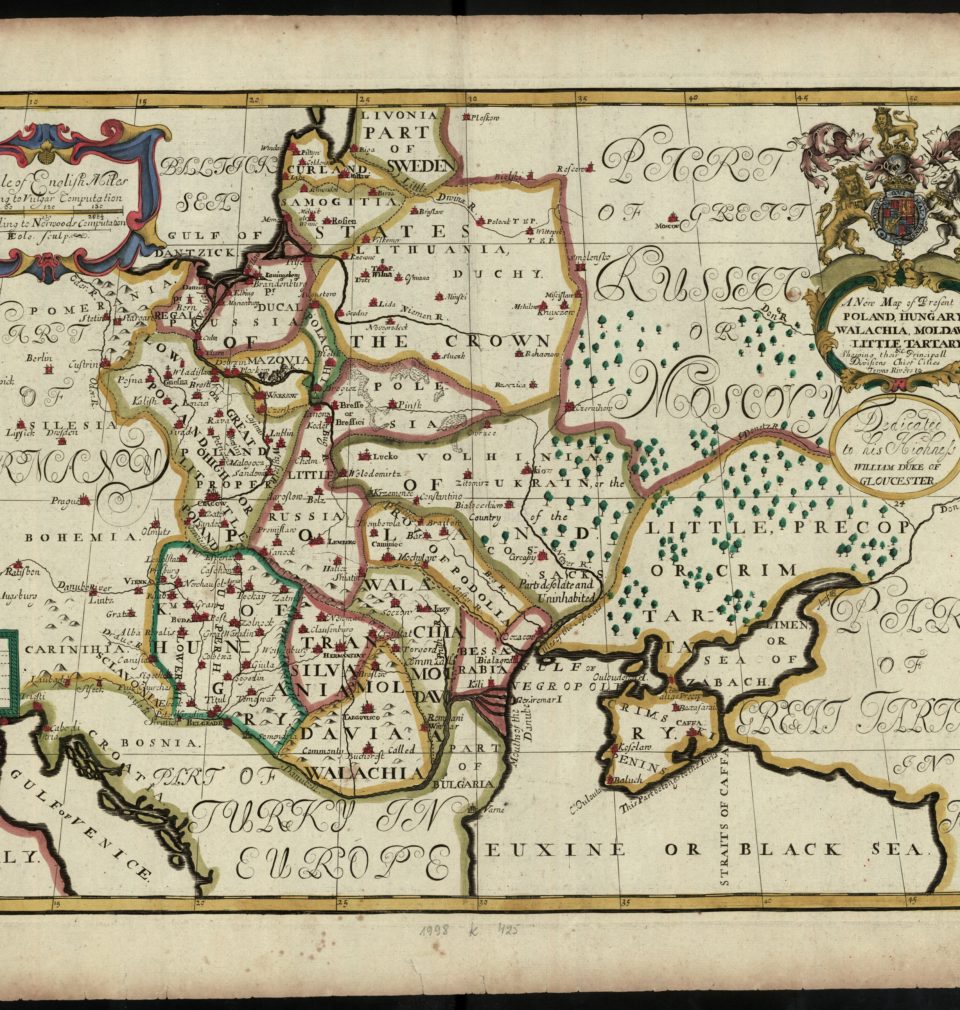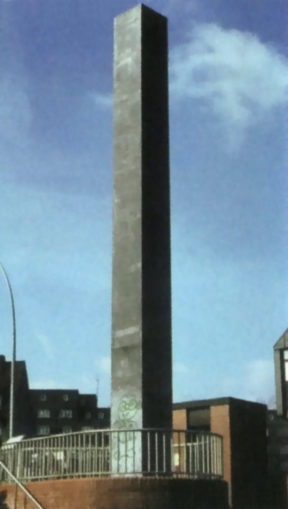
Culture and Politics
New “Concert of Powers” in Central Europe
Publication: 14 October 2021
TAGS FOR THE ARTICLE
TO THE LIST OF ARTICLESTraditionally speaking, the countries dominating in Central Europe dominate the whole continent, so both Russia and Germany are interested in this area, and Turkey, the most dynamically developing country, will also develop an interest.
Polish politicians are not really able to utter the word “geopolitics”, probably because it has too much bad odour about it. But elsewhere, in Russia for example, it is much more present in public discourse. This is understandable, and all the more so because the term is used to describe the rivalry between superpowers for domination over peripheral regions. But it could be defined in a different way – as a political reflection placing particular emphasis on geographical factors: space and demography. And since the author of the concept of “geopolitics”, Rudolf Kjellén, lived a century ago, a third factor should be added: technological potential. The key concept in the doctrine of geopolitics is the Raum-motiv, that is the issue of spatial expansion, which broadens the geopolitical field. Among the seven laws of expansionism formulated by Friedrich Ratzel, it is worth recalling the claims that the space of a country expands with the development of its culture, and that the growth of a state leads to the development of ideas, production, trade and missionary activity, and that it occurs through absorbing smaller entities.
I would like to share a few “geopolitical” hypothesis regarding the future of Central Europe in the next ten or twenty years. Another name of a German geopolitical thinker comes to mind in this context. In 1915 Friedrich Naumann formulated the concept of Mitteleuropa, which became a synonym for German expansionism. Hoping for victory in the First World War, the German Empire planned the following configuration of states in this region: a small Kingdom of Poland encompassing Warsaw and Vilnius, the independent Baltic states of Estonia, Latvia, Courland and Lithuania, an independent Ukraine, Tatar‑German Crimea and a half‑autonomous Cossack Republic, a Russian‑German condo‑ minium. Most of Armenia would go to Turkey, while Azerbaijan and Georgia would become independent states. It is hard to resist the impression that the map of Europe in 1990 was much closer to this vision than Europe after the Versailles Treaty.
If we look at Central Europe from a very broad historical perspective, we can present its history in the last few centuries as the process of the withdrawal of great powers. First, of Turkey, over a long period. Then, in two instalments, of the German element. The first instalment took place in 1918, when the Habsburg Empire collapsed and the imperial administration withdrew from Galicia, the North Balkans, Bohemia and Slovakia. The second instalment was the Yalta and Potsdam agreement in 1945. After several centuries of their presence on Baltic shores and the lower Vistula, from where the whole “Prussian idea” developed, the Germans were removed. A similar process occurred in western and northern Bohemia, in Transylvania, Prague and Budapest, in Silesia and Pomerania. Death and expulsion affected millions of people, with centuries-long cultural continuity being broken. The presence of Jews in European territory had an even more dramatic ending, and their new state ironically started to grow as a piece of Central Europe on a different continent. In 1989 the retreat of Russia came about. New states emerged on the territory of the former empire of the Tsars, colonial dependence of the Warsaw Pact and Comecon countries was abolished, and even the influence of communist ideology faded, for example in the former Yugoslavia and Albania. The removal of Turkey, the expulsion of the Germans and the retreat of Russia are three processes which caused the “explosion of Central Europe”. One could say that a geopolitical pause occurred; a moment of relief from the pressure of empires.
But empires have their virtues. Niall Ferguson wrote about it revealingly in his monograph on the British Empire. Lack of empires could have meant, as many thought, the descent of Central Europe into national, ethnic or religious conflicts, economic protectionism and various crises caused by the inefficiency of the new states. And later developments partly confirmed this. It is enough to recall Kosovo, Bosnia and Herzegovina, Karabakh, Transnis‑ tria, Ossetia and Abkhazia, problems with the Mafia in Montenegro, Polish‑Lithuanian disagreements or the more violent ones between Hungary and Slovakia. The list seems long but we must remember that between Germany (“Old Union”), Russia and Turkey, as many as twenty‑three independent states have emerged. The majority of them are entities of limited potential with less than five million inhabitants.
New lines of division have appeared in this new Europe of twenty-three states. The differences between groups of states are larger than in 1990, and are still growing. What we are seeing here are areas of different speeds. The Visegrad Group certainly stands out: these countries belong to OECD, NATO and EU, cooperate with each other and achieve between 60 to 80 percent of average European GDP (in per capita buying power). Alongside the Visegrad Group we have what we could call “Visegrad Plus”: Slovenia, Romania and Bulgaria, who are also experiencing economic growth and cultural advancement. The rest are spread over a large distance, from Croatia, now crossing the threshold of European Union membership, through Montenegro and Serbia preparing for integration, to Moldova undertaking its first reforms. Then we have Ukraine, which is hesitating, Belarus descending ever deeper into a mad dictatorship, and Albania and Kosovo with their dramatic internal problems. A group of these countries is sometimes referred to under the term BUMAGA (Belarus, the Ukraine, Moldova, Azerbaijan, Georgia, Armenia). “Bumaga” is a blank page. Anything can be written on it – both close integration with Russia in the case of Belarus, conditioned integration in the case of the Ukraine, Islamic revolution in Azerbaijan, or embroilment in unending conflict in the case of Armenia. Such black scenarios are not as improbable as they may seem.
Central Europe is doubly dependent: economically on Germany, as 25 to 40 percent of trade is with Germany and countries of the region count on investment coming from there, while in the sphere of energy it is dependent on Russia. This state of affairs is deepening mostly because of Russian‑German agreements. The recent support of Germany and Italy for the “South Stream” initiative is an example of that.
Against this roughly‑sketched background I would like to formulate four propositions. The first is: the part of Europe between Germany, Russia and Turkey ceased to be a homogeneous collection of post‑communist political entities. They have split into groups of various speeds, without prospects for a quick change in this situation.
The second proposition could be put as follows: in the last twenty years the neighbours of Central Europe have changed a great deal. They have become significantly stronger. Germany absorbed the GDR and has become the leading force of the European Union. Nothing in Europe can happen without its approval. After years of chaos, Russia is today consolidated and records a huge trade surplus, about which the EU can only dream (the only countries with better results are China, Germany and Saudi Arabia). It is also becoming more assertive. It is a rich Russia of new sheiks. Turkey, whose population was smaller than Poland’s in the early 1970s, now has almost eighty million inhabitants. If it acceded to the European Union, it would be its largest country. In recent years Turkey has recorded economic growth of around eight to nine percent, it has a rapidly developing infrastructure, and is a country of success and economic expansion. Its position is strengthened by the fact that it maintains an army of six hundred thousand well-trained soldiers, it enjoys enormous support in Turkic-speaking countries and the Muslim world, and is treated as an important partner by the United States of America. Let us recall that its territory is larger than that of France and its political stability impressive. It will probably soon become the main partner of Albania, Bulgaria, Greece, Macedonia, Bosnia, Azerbaijan, Georgia and Ukraine.
So what future developments can we expect? Let us consider three factors. The first is demography. Central Europe is demographically weakening. For example, censuses in Lithuania and Romania have revealed a dramatic situation: over a ten percent drop in population. In Poland the percentage of people of pre‑ production age has fallen significantly, while the percentage of people of post‑production age has been growing. Ukraine is already faced with a demographic disaster. Therefore, we know that the competitive‑ ness of the region cannot be built on human resources. Prospects are poor for practically all countries of the area. The only dynamic ethnic groups are Albanians and the Roma, which engenders addition‑ al social problems. Interestingly, the Russians have stopped their negative demographic trend where demographic policy is seen as an indispensable condition of the state’s survival as a global player, and therefore radical measures have been undertaken. Germany maintains its population potential thanks to its attractiveness to immigrants. Only in Turkey is an increase in population predicted, up to as many as one hundred million inhabitants. It is worth noting in this context that the population of Central Europe has been over‑ estimated, which means that these countries are basing their calculations regarding unemployment, GDP per capita and voting activity, on inaccurate data.
The second factor which will determine the future are energy issues. Two extreme scenarios are worth analysing here. The first is the spread of the Belarusian or Ukrainian model, namely trading off economic sovereignty for energy (for example, selling shares in distribution networks, privatisation of the energy sector). In other words, the whole region could end up being the energy dominion of Russia, a kind of “energy shield”. It means diversification of supplies to Europe (for example, the Nabucco pipeline), building of interconnectors, development of low emission coal technologies and a leap in energy efficiency. What is at stake is the defence of energy sovereignty and production costs. A peculiar example of the second scenario would be the exploitation of shale gas in Poland and Ukraine, which is tantamount to a geopolitical earthquake.
The third factor is politics, in which we can also imagine two extreme scenarios, regarding above all the relations between the EU and Russia, as well as NATO and Russia. The first could be symbolically termed the “Jürgens scenario”, from the name of the president of the Moscow Institute of Contemporary Development, connected with President Medvedev. This scenario means an evolution of Russia towards a democratic welfare state and a strategically privileged partnership with the EU. The main beneficiaries of such a situation would be Poland, the Visegrad Group and also to a large extent, Germany. The second scenario could be labelled the “Dugin scenario”, from the name of a famous ideologue, author of the book The Foundations of Geopolitics (a handbook of Russian military and diplomatic academies). This scenario is a course on the revival of Russian sovereignty and the position of regional power, not only in words but also in deeds. It also means “great revenge”, not so much for the lost Cold War but for the humiliation suffered by Russia in the 1990s. Dugin’s conceptions assume driving the US out of Europe, breaking the Atlantic hegemony and the systematic development of the great economic zone around Russia. The remedy for such policy is maintaining the unity of the European Union, American investment and American military installations in Central Europe and – let’s not beat about the bush – increased military effort of the countries of the region. Today, only Poland spends two percent of its GDP on armaments.
Of course, many kinds of game could be played on the chessboard of Central Europe and various scenarios could be imagined, but one fact is unquestionable – and this is my third proposition. Namely the weight of figures and pawns used here is growing, and the power and potential of the countries of the region is increasing. The tradition of statehood, for example in Ukraine, and sovereignty, for example in Poland, is deepening. The new states are growing in confidence, and reinforcing their structures. Their economic and cultural potential is also increasing. The countries of Central Europe are systematically narrowing the development gap between themselves and the West. It is partly an effect of globalisation but also a blessed result of the EU cohesion policy, access to the common market and cuts in military spend‑ ing. Should these trends continue, the Visegrad countries as well as the Visegrad Plus countries will have achieved between 80 to 100 percent of the average Eu‑ ropean GDP, and adopt the common currency within 20 years, which means merging with the “old Union” into one entity. The countries of V4 and V4+ are politically over‑represented in European political bodies. They have more eurodeputies and commissioners than the traditional, great western European powers. With even a partial coordination of their actions they could significantly influence the direction of EU development and especially its eastern policy, energy policy and its strategy towards Turkey.
Until now, the countries of Central Europe have en‑ joyed the protection of a special “advocate” – Germany, which fortunately felt obligated to lead this field of European policy. It does not have to be so in the future. The European determination of Germany may cease to be so resolute and the area of Central Europe may come under the increasing economic pen‑ etration and political pressure of Russia and Turkey. It would be a quite natural return of the great powers to the areas of their historical domination. And it may not take very long. At the last meeting of parliamentary representations of the Central European Initiative (CEI) countries, which took place last May in Belgrade, Italy announced, as the leader of the group, that Russia and Turkey should be invited to the organisation. The ambassadors of these countries present at the meeting expressed great satisfaction and interest. So the game is already on.
But it is a new game. Traditionally speaking, the countries dominating in Central Europe dominate the whole continent, so both Russia and Germany are interested in this area, and Turkey, the most dynamically developing country, will also develop an interest. The change does not consist of the fact that the players aspiring to domination over Mitteleuropa have undergone a radical internal change. The basic difference is – and this is my fourth proposition – that a new player has appeared, an empire of a new type: the European Union. Its policy is in a sense expansionist. It absorbs successive countries under its sphere of influence. It supports the development of countries which once escaped Turkish domination and the more recent Soviet domination. This soft policy of the great European power strengthens the countries of the region, mitigates bilateral conflicts and delivers what has always been the main merit of empires: a unified market, a universal legal order, infrastructure and security. For example, it is capable of intervening against discriminating Russian practices. It is the level of integration with the European Union that determines the position of Central European countries in this widely spread group. In this sense the EU “rules” here. The attractive power of the “European Empire” is sufficiently large for the big players to refrain from endangering their relations with the EU by conflicts with the countries of Central Europe. It can be seen in the example of Russia, which for the sake of good relations with the “European Empire” is ready to make compromises with the countries of our region. A key role in Central Europe is now played by the new “European Empire”, almost invisible, seemingly lacking in ambition and devoid of aggression. But its soft presence makes it difficult to repeat the great powers’ game according to old scenarios.
What conclusions for Poland can be drawn from this? We cannot be a passive observer. We are slowly building Polish leadership in the region. At the start of the reforms our position was much weaker because of our economic situation. We were the only country with food rationing and other staples, a bankrupt country whose debt had to be written off. Lack of political stability did not help either. We have had 14 prime ministers in 20 years. However, we have also managed to change that. Poland has the biggest economy in the region, although it is less wealthy than some of the other countries. The Warsaw stock market is today larger than that in Vienna, and the contemporary market in Central Europe is determined by the stock markets in London, Moscow, Istanbul and Warsaw.
Among countries of the EU, Poland is probably the best expert on eastern issues, with such analytical institutes as the Marek Karp Centre of Eastern Studies, infrastructure for cooperation such as the economic forum in Krynica, an efficient diplomatic service and “white‑collar” intelligence – an army of Russian, Ukrainian, Bohemian or Slavic scholars. If we enhance our economic and political presence in the Balkans and in Southern Europe, we could become the biggest player in the region, enabling the influence of Germany, Russia and Turkey to be kept in check.
Copyright © Herito 2020



